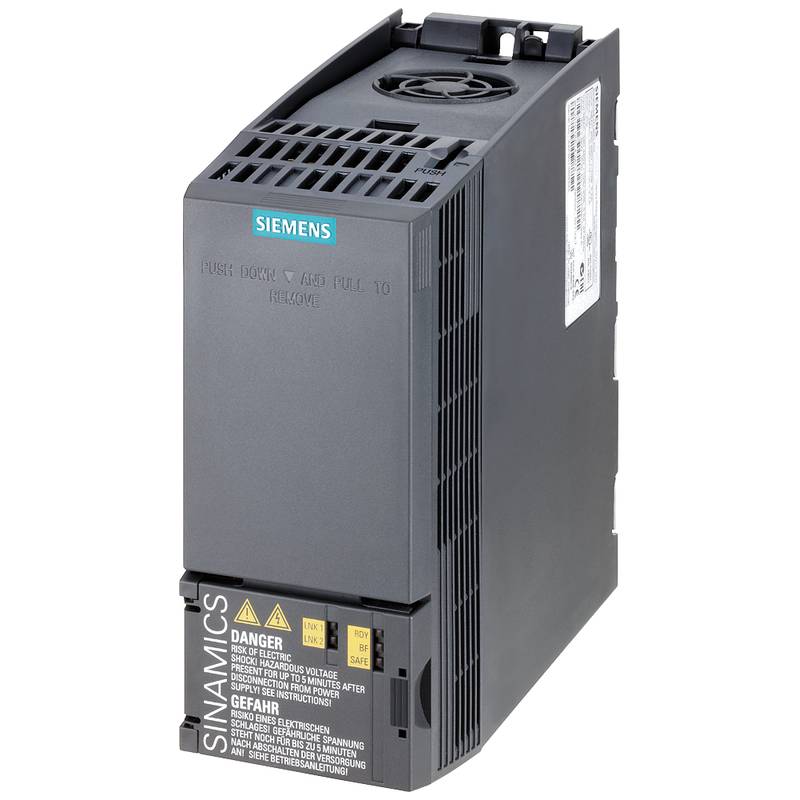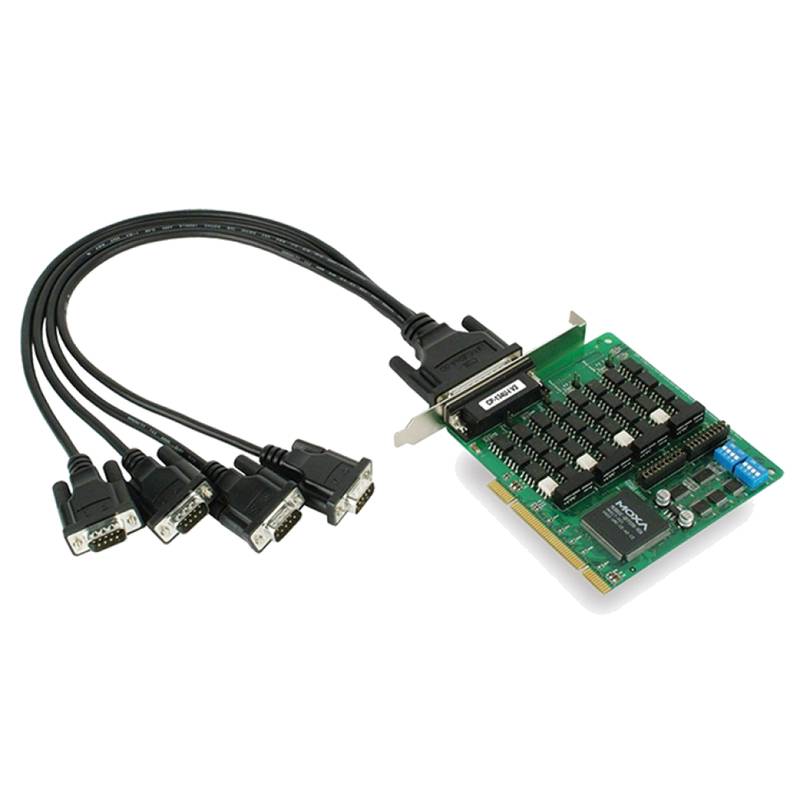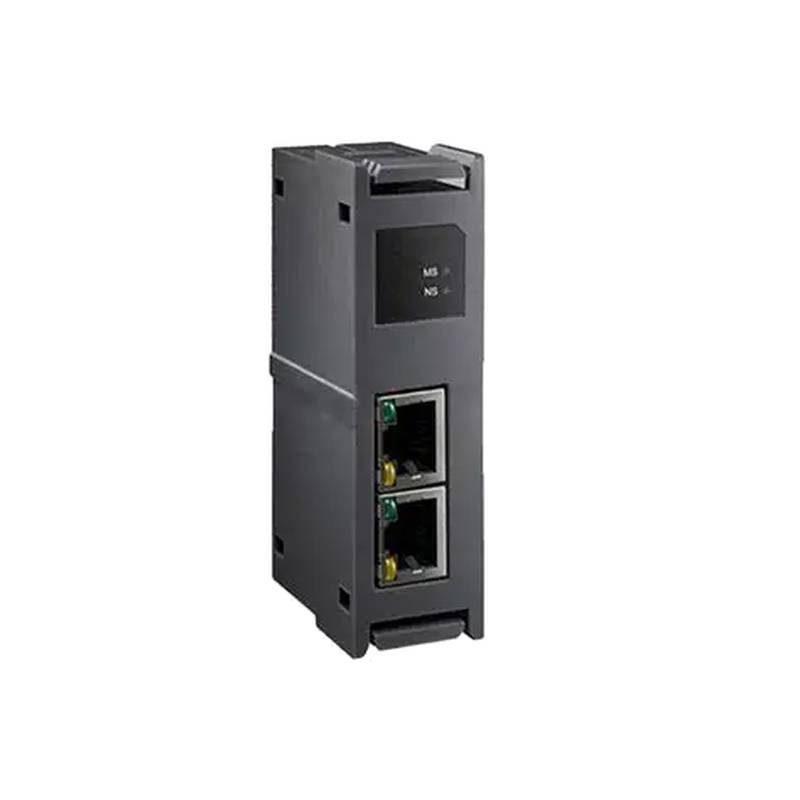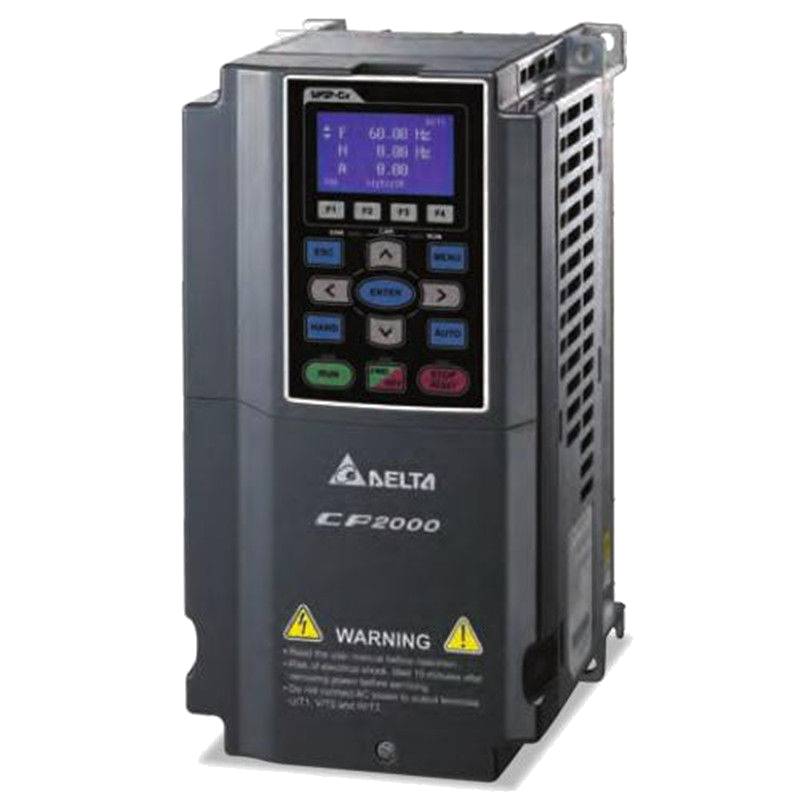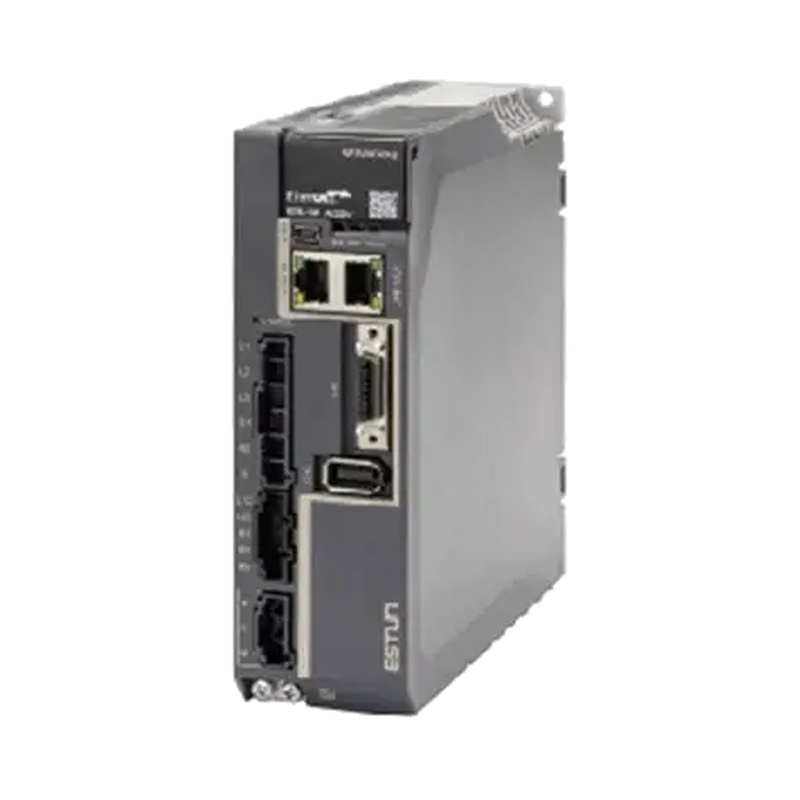
The SCHNEIDER ATV630D11N4Z is a high-performance variable frequency drive (VFD) designed for demanding industrial applications, offering superior motor control, energy efficiency, and advanced features. This robust VFD boasts a nominal power of 11 kW and operates on a 400V AC supply with three-phase input and output. Its integrated Modbus RTU communication protocol ensures seamless integration into automated systems, while its IP20 enclosure provides reliable protection in harsh environments. With a focus on energy savings and optimized performance, the ATV630D11N4Z is engineered for precise speed and torque control, making it an ideal solution for a wide range of variable torque applications.
Product Specifications
| Parameter | Value |
| :--------------------- | :-------------------------------------- |
| Product Name | SCHNEIDER ATV630D11N4Z |
| Nominal Power | 11 kW |
| Supply Voltage | 400 V AC |
| Input/Output Phases | 3-Phase |
| Enclosure Type | IP20 |
| Communication Protocol | Modbus RTU |
| Nominal Output Current | 22 A |
| Overload Capacity | 150% for 60s |
| Operating Temperature | -15°C to +50°C |
| Dimensions (HxWxD) | 450 mm x 220 mm x 234 mm |
| Weight | 10.4 kg |
Core Features & Market Positioning
The SCHNEIDER ATV630D11N4Z stands out in the industrial VFD market due to its advanced features and robust construction, positioning it as a premium choice for professionals demanding reliability and performance. Its patented multi-pump and multi-logic control functionalities offer unparalleled flexibility, enabling sophisticated system management directly within the drive. This capability reduces the need for external controllers, simplifying system architecture and lowering overall project costs. The VFD's embedded energy-saving functions, such as automatic energy optimization and sleep mode, provide significant operational cost reductions, a critical factor in today's cost-conscious industrial landscape. Furthermore, its comprehensive diagnostic tools and fault logging capabilities enhance maintenance efficiency and minimize downtime, reinforcing its market position as a leader in intelligent motor control. The ATV630 series is renowned for its robust thermal management and adherence to international standards like EMC compatibility, ensuring consistent operation in electrically noisy environments.
Key Application Scenarios
This SCHNEIDER ATV630D11N4Z frequency converter is exceptionally well-suited for a variety of demanding industrial applications where precise motor control and energy efficiency are paramount. It excels in variable torque applications such as centrifugal pumps, fans, and compressors, where flow or pressure regulation is essential. The drive's ability to manage multiple pumps simultaneously makes it an excellent choice for water supply and wastewater treatment systems, optimizing performance and energy consumption. In HVAC systems, it facilitates precise temperature and airflow control, leading to significant energy savings. Its robust design and advanced control algorithms also make it suitable for use in material handling equipment, conveyors, and mixers within the manufacturing and processing industries. The integrated Modbus RTU communication allows for seamless integration into SCADA and Building Management Systems, enabling centralized monitoring and control.
Practical System Integration Guidance
Integrating the SCHNEIDER ATV630D11N4Z into an existing industrial setup requires careful consideration of power, control, and communication wiring. For power connections, ensure the incoming three-phase supply is correctly terminated at the line terminals (L1, L2, L3) and the motor phases are connected to the output terminals (T1, T2, T3). Grounding is critical; always connect the protective earth conductor to the dedicated grounding terminal. Control wiring for digital and analog inputs/outputs should be routed separately from power cables to prevent electromagnetic interference. When using the Modbus RTU interface, pay close attention to correct termination of the communication bus (A/B lines) and ensure consistent baud rate, parity, and slave address settings between the VFD and the master controller. Programming the drive typically involves configuring motor parameters, application-specific settings (e.g., ramp times, acceleration/deceleration profiles), and communication settings via the VFD's keypad or through specialized software like SoMove.
Operation and Risk Mitigation
Operating the SCHNEIDER ATV630D11N4Z VFD involves understanding its parameter settings and safety features to ensure optimal performance and prevent potential risks. Before commissioning, it's crucial to perform a motor auto-tuning process to match the VFD's output precisely to the connected motor's characteristics, preventing overheating and ensuring efficient operation. Familiarize yourself with common fault codes such as "Overcurrent" (OCF), "Overvoltage" (OVF), and "Motor Overheating" (OverTemp) to quickly diagnose and resolve issues. Always ensure that the VFD is installed in a well-ventilated area, as overheating can lead to component failure. Implement appropriate lockout/tagout procedures during maintenance and ensure that all safety interlocks are functional. The drive features built-in thermal protection for both the VFD and the motor, which should be correctly configured. Adhering to the manufacturer's guidelines for environmental conditions, such as avoiding excessive dust or moisture, is vital for long-term reliability and safety.
Scalability & Long-Term Value
The SCHNEIDER ATV630D11N4Z offers significant scalability and long-term value, making it a strategic investment for evolving industrial needs. Its modular design and compatibility with Schneider Electric's broader EcoStruxure™ platform facilitate seamless integration into smart factory environments and Industrial Internet of Things (IIoT) solutions. This allows for advanced data collection, remote monitoring, predictive maintenance, and optimized operational management. The VFD supports multiple communication protocols beyond Modbus RTU, such as EtherNet/IP and Profibus, enabling flexible integration with various automation architectures and ensuring future-proofing. For applications requiring higher power ratings or more specialized functionalities, the ATV630 series offers a wide range of models, allowing for a consistent user experience and programming approach as systems scale. This compatibility and forward-thinking design ensure that the ATV630D11N4Z remains a relevant and valuable asset throughout the lifecycle of an industrial installation.
FAQs
1. What is the primary function of the SCHNEIDER ATV630D11N4Z?
This advanced VFD controls motor speed and torque precisely. It's designed for variable torque applications like pumps and fans.
It offers significant energy savings by matching motor speed to demand. The drive also provides advanced diagnostics and protection features.
Its core purpose is optimizing industrial processes, reducing wear, and enhancing operational efficiency. It integrates easily into automated systems.
2. How does the ATV630D11N4Z improve energy efficiency?
The VFD optimizes motor speed to match the actual load requirements. This reduces wasted energy significantly compared to fixed-speed operation.
It features built-in energy-saving functions, like automatic energy optimization and sleep mode. These continuously adapt to conditions for maximum savings.
By precisely controlling motor output, it prevents over-consumption of power, leading to lower electricity bills and a reduced carbon footprint.
3. Can the SCHNEIDER ATV630D11N4Z be integrated with other control systems?
Yes, it features built-in Modbus RTU for easy integration with PLCs and SCADA. It supports other protocols with optional modules.
This VFD is part of Schneider Electric's EcoStruxure™ platform for IIoT connectivity. It enables remote monitoring and data analysis.
Its flexible communication options ensure it can fit into diverse automation architectures, both new and existing.
4. What are the typical applications for this VFD?
It's ideal for variable torque applications like centrifugal pumps and fans. Water and wastewater treatment systems are common uses.
The drive is also suitable for HVAC systems, material handling, and conveyors. It enhances control in manufacturing processes.
Essentially, any application requiring precise speed and torque regulation for efficiency benefits from this VFD.
5. What is the power rating and voltage of the ATV630D11N4Z?
This specific model has a nominal power rating of 11 kW. It operates on a 400V AC three-phase power supply.
The VFD provides three-phase output to the connected motor. It's designed for robust industrial power systems.
Ensure your power source meets these specifications before installation for safe and optimal operation.
6. How do I perform motor auto-tuning with the ATV630D11N4Z?
Access the VFD's parameter menu and navigate to the auto-tuning function. The drive guides you through the process.
Ensure the motor is disconnected from the load during this procedure. The VFD will then measure motor characteristics.
Proper auto-tuning is crucial for accurate speed control, energy efficiency, and preventing motor damage.
7. What is the enclosure rating and its significance?
The ATV630D11N4Z has an IP20 enclosure rating. This means it protects against solid objects larger than 12.5mm.
IP20 protection is suitable for many industrial control panels and clean environments. It offers basic protection against accidental contact.
Always ensure the VFD is installed in an environment that matches its IP rating for longevity and safety.
8. What troubleshooting steps can I take for common faults?
Check fault codes displayed on the VFD and consult the manual for meanings. Common issues include overcurrent or overvoltage.
Verify power supply stability, motor connections, and ensure the load is within the VFD's capacity. Check for loose wiring.
Perform basic diagnostics like checking cooling fan operation and ensuring ventilation is unobstructed. Re-enter parameters if needed.
9. What communication protocol does the ATV630D11N4Z use?
It comes standard with Modbus RTU communication protocol. This is widely used in industrial automation.
Optional communication cards can be added for other protocols like EtherNet/IP or Profibus. This enhances flexibility.
Proper configuration of communication parameters is essential for successful integration into a network.
10. What are the benefits of using a VFD over a traditional starter?
VFDs offer variable speed control, unlike basic starters. This allows for precise process optimization.
They provide significant energy savings by matching motor speed to the load. This also reduces mechanical stress and noise.
VFDs offer advanced features like soft start/stop, braking capabilities, and comprehensive diagnostics for better system management.

















